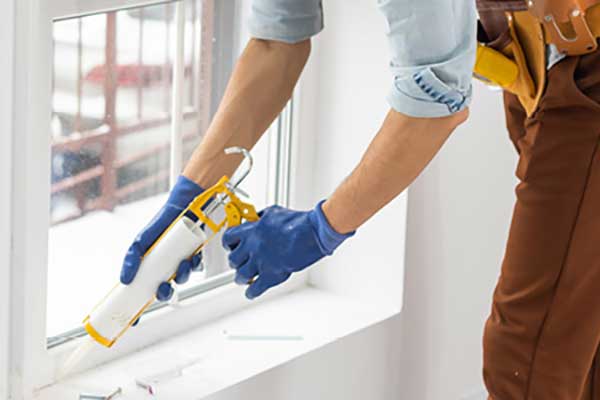Prepare your home and car for cooler temperatures

Tips for your home
Check for air leaks.
One of the most effective ways to keep your house warm is to make sure heat doesn’t escape. Feel around doors, windows and baseboards for cool air creeping into your home. Caulking windows is an easy way to trap the heat, and it works for other areas like gaps in siding or drafty doors. If need be, add or replace weatherstripping and caulk that is old or damaged.
Cover and flush the water heater.
Over time, sediment can collect in the bottom of your water heater. Flushing the water heater once a year not only cleans it from buildup but can also improve heating speeds, eliminate foul odor from stagnant water and reduce energy costs by cutting down the time needed for the water to get hot.
Check smoke and carbon monoxide detectors.
Detectors are there to warn you of an issue occurring in your home. Make sure that you test the functionality of your detectors on a regular basis. Be sure to change the batteries in your detectors or replace detectors that are not functioning.
Clean your gutters.
Ensure water can easily pass through your gutters before cooler, and possibly icy or snowy, weather arrives. Clogged or damaged gutters can cause water, pests or rodents to enter your home. Don’t want to climb on a ladder? Hire a local gutter cleaning company.
Set or get a programmable thermostat and check your furnace.
Program the thermostat to your schedule, such as keeping your home cooler during the day or while you’re not home, to help save money on your energy bill. While you’re at it, call a local heating and air company to inspect your furnace to make sure it’s in good working order. Calling in advance will give you peace of mind when temps begin to drop.
Tips for your car
Get it serviced.
Before driving conditions turn less than ideal, it’s a good idea to take your car in for a checkup. Make sure the battery, brakes, belts, spark plugs, cooling and heating are all working properly. Make sure fluids are topped off and that your tires are properly inflated.
Keep a safety kit handy.
It’s a good idea to have jumper cables, a tire pressure gauge, a tire patch kit, blankets, a flashlight and a phone charger in your car in case of emergencies. Getting a flat tire or a dead battery in cold temperatures is never an ideal situation but having some supplies on hand can help you stay safe and save you time if you’re able to handle the situation yourself.
Keep the tank at least half full.
A fuel tank that’s over halfway full reduces condensation, which can prevent your gas line from freezing.
Replace your windshield wiper blades.
You want to replace your blades once or twice a year depending on where you live and the blades’ level of wear and tear. If you live in an area with harsh winters, you may want to consider heated blades, which can last longer in freezing temperatures.
Review your driving habits.
Driving on snowy or icy roads is much different than driving on a sunny, clear day. Avoid distractions, put your phone down and pay attention to the weather conditions. You may need to adjust your speed, increase your following distance or plan alternate routes to stay safe. Visiting family and friends for the holidays? Notify them of your travel plans and route in case you have vehicle trouble or an emergency.
Sources:
https://money.usnews.com/money/personal-finance/articles/2015/10/06/13-hacks-to-winterize-your-home-and-trim-your-heating-bill
https://www.bridgestonetire.com/tread-and-trend/drivers-ed/how-to-winterize-a-car